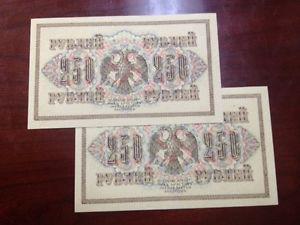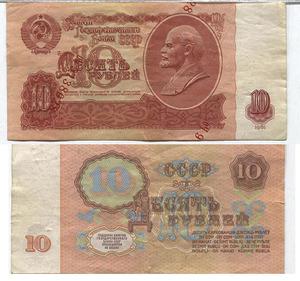It is simply impossible to imagine modern life without money today. Even the most ardent opponents of material wealth are forced to deal with them. You can refuse electronic payments, do not use credit cards, but none of us will most likely be able to live without paper money.
Banknote concept
There are several of them. The simplest of them defines banknotes as cash made from paper using paint. From the point of view of classical economic theory, a banknote is a form of credit money. They are issued by the central bank of a country, which in the vast majority of cases is one of the institutions of state power.
However, in its economic content, a banknote is not an absolute synonym for paper money. These two concepts have a number of significant differences.
- Banknotes are issued only by the bank, while paper money can be issued by the treasury or the ministry of finance.
- Banknotes have gold or bill security. Paper money is in most cases unsecured.
- A banknote is issued to ensure turnover. The purpose of issuing paper money is to cover the budget deficit.
Types of money
A banknote is one of the forms of existence of money. One, but not the only one. At different times and in different conditions, their various types were used.
All money can be conditionally divided into full and inferior. The first include those that have their own real value - this is the cost of their production, and it is equal to their face value. This type includes commodity money, which was widely used for barter exchange at the dawn of the emergence of monetary circulation, and metal coins, silver and gold.
For inferior money, the nominal value significantly exceeds the real one. These include paper and credit. A banknote is one of the varieties of the latter.
Banknote History
Credit money arose to support the process of buying and selling goods on credit. In the beginning, for these purposes, the buyer wrote a bill in the name of the seller. This is an unconditional obligation of the debtor to pay the holder of this paper a certain amount of money after a certain period of time.
Over time, the bills themselves become the subject of an agreement between the debtor and the creditor. Commercial banks began to issue their own receipts secured by bills. They became the first banknotes. They enjoyed greater trust among traders in comparison with the obligations of individual drawers. This was mainly explained by the fact that banks at that time were the most solvent institutions.
The very first banknotes appeared in China in the 8th century. They were pieces of cotton paper. Paper currency in Europe originated in Sweden in 1661. England began issuing banknotes in 1694, Denmark in 1713, France in 1716.
Paper Money in Tsarist Russia
The idea of issuing bank notes, as the people called banknotes, in Tsarist Russia arose even during the reign of Elizabeth Petrovna, in the first half of the 18th century. However, it was categorically rejected by the Senate, which in no way could admit that some “pieces of paper” would go into circulation instead of “real” money. Under Peter III, the state treasury was completely empty. As a result, in May 1762, the issue of bank tickets was started, which replaced metal money in circulation. However, they never came into circulation. A coup d'etat prevented Catherine the Great from ascending the throne.
Nevertheless, the idea of issuing paper money was realized already in 1769, when, by decree of the empress, two banks were established, in St. Petersburg and Moscow. Received Russian banknotes had the value of 25, 50, 75 and 100 rubles.
Banknotes of the USSR
The revolution of 1905 and 1917 had a huge impact on the entire monetary system of the country. But could it be otherwise when the whole way of life of the whole state completely changed? At that time, the country's budget was completely unbalanced: the reputation of the Russian state at the world level was discredited by the ongoing global changes in the state system. Inside the country, things were not doing well either. The masses decided that finally it was their finest hour. They demanded to reduce the length of the working day, increase the level of remuneration, the size of various benefits, and assign the state with the obligation to provide factories with food. As a result, the new government was forced to use paper money not only to finance huge military spending, but also as a source of covering the budget deficit.

Over 9.5 billion rubles were issued. By November 1, 1917, the amount of paper money amounted to 19.5 billion rubles, and the purchasing power of the ruble was slightly more than 8 kopecks. The interim government was forced to issue banknotes in denominations of 250 and 1000 rubles. “Kerenki,” as the people called banknotes formally denominated in gold rubles, actually had no collateral. They walked on the territory of the country until the very end of the Civil War.
With the advent of Soviet power in the country, the construction of communism began. And communism and money, as you know, are two completely incompatible things. But everyone understands that without them the state simply cannot exist. And the new government found a way out of the situation: they issued "settlement signs." At its core, it was the same money, only "with a different sauce."
Monetary reforms of the USSR of the twentieth century
During the Great Patriotic War, the country's monetary system was relatively stable, despite all the difficulties. This was achieved by the introduction of the card system and the establishment of solid prices for goods. But a strong reduction in the mass of goods inevitably led to the formation of a large amount of excess money in circulation. In addition, in the difficult post-war years, the country was literally flooded with fake banknotes. This seriously complicated the process of economic recovery. Therefore, in 1947, it was decided to conduct a monetary reform, as a result of which 10 rubles of the old type were exchanged for 1 new ruble.

Another reform was carried out in the middle of the twentieth century. It was then that the “Khrushchev wrappers”, or simply “wrappers,” as the 1961 banknotes were called, came into circulation. They got such a name for their small size, comparable to a candy wrapper. This money lasted until the 90s and ceased to exist together with a whole country, a symbol of which they, in particular, were.
Banknotes of modern Russia
The extremely difficult economic situation and high inflation of 1991-1993 led to the decision to issue 50 and 100 ruble notes. But this led to an even greater jump in prices. Gradually, “wooden rubles,” as the people called banknotes of any kind, turned into paper in the literal sense of the word. Their purchasing power was falling at a cosmic speed.
The reform carried out in 1998 envisaged the strengthening of the ruble immediately by a factor of 1000. It was carried out more gently, compared with the reforms of the 40s and 60s. Firstly, there were no clear deadlines for which the population had to exchange cash on hand. Secondly, the "old" and "new" banknotes had the same circulation in the country throughout 1998.
Modern Bank of Russia banknotes are banknotes made using the most advanced technologies in the field of protecting their authenticity. To prevent the appearance of fakes, the Central Bank is constantly introducing new modifications of existing samples, the protective functions of which are strengthened from time to time.
Today, notes in denominations of 10, 50, 100, 500, 1000 and 5000 rubles are in circulation.
US Dollar - World Currency
The US dollar has long been recognized as an international payment instrument. He firmly entered the number of world reserve currencies. This is because the United States was the last to abolish the gold standard of its currency. This happened only in 1971, while European countries did this at the beginning of the twentieth century, during the time of the Great Depression.
The functions of the Central Bank in the United States are performed by the Federal Reserve System. It is she who has the right to issue and issues cash in circulation. The US dollar in circulation has face values of 1, 2, 5, 10, 20, 50 and 100. There are also banknotes of 500, 1000, 5000 and even 10,000 dollars, but they are used only for internal payments by the Fed and the US Treasury.
Interesting banknote facts
Money circulation has been going on for several centuries. During this time, a lot of interesting and truly amazing facts related to cash have accumulated. The most interesting banknotes in the world - what are they?
The largest banknote at face value was issued in Hungary in 1946. Its worth is one billion billions (i.e. 1021). The diameter of the universe, by the way, is 1023 km.
The largest bill in terms of purchasing power has circulation in the UK. Its face value is 1 million pounds. It is known that 2 such banknotes exist.
The smallest denomination denomination was in circulation in the USSR. This is a check for 1 kopeck, which was issued by the State Bank for internal payments.
A banknote is a form of existence of cash, without which a modern monetary system simply cannot exist. Despite the development of cashless payments, we are unlikely to succeed in completely abandoning paper money in the near future.